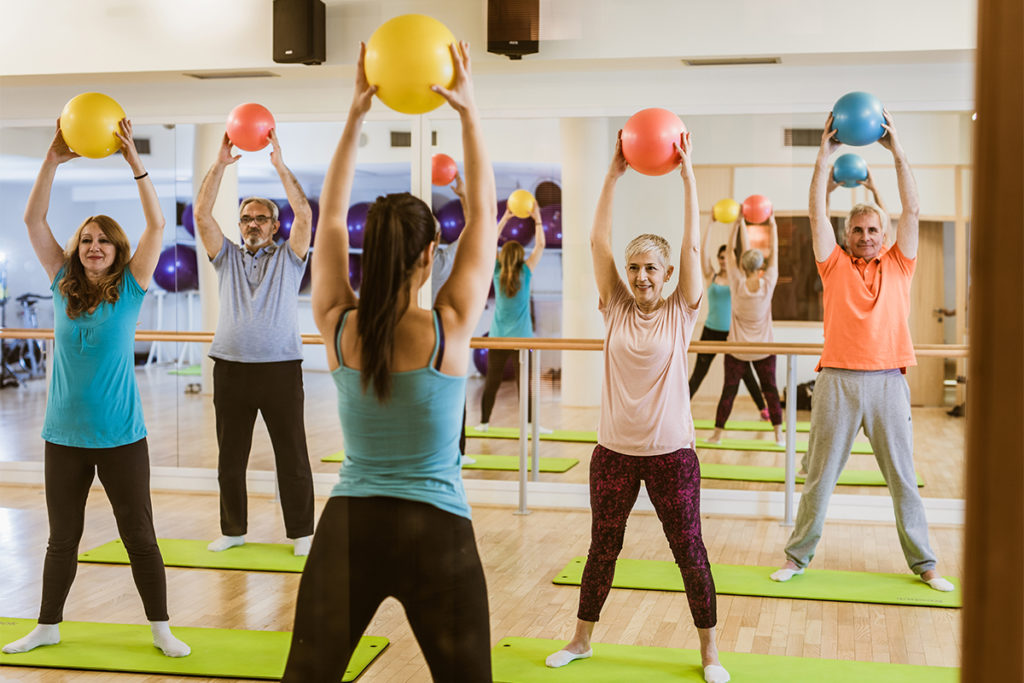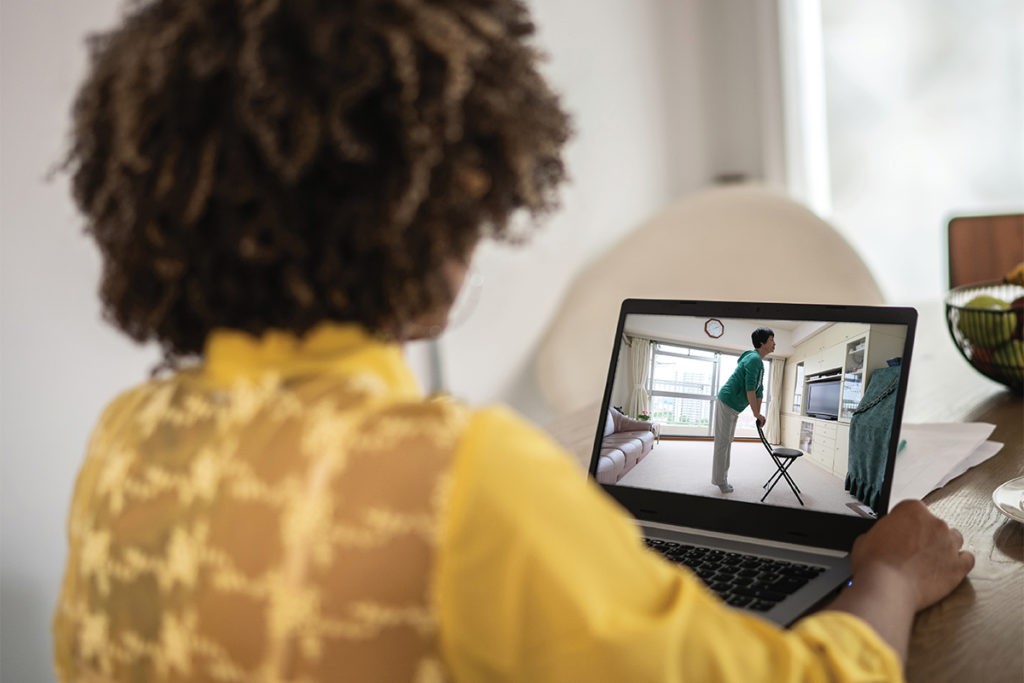The Future of Pilates
An Inner IDEA® panel of experts dialogue on essential issues affecting the development of the Pilates industry.
“The Future of Pilates,” a unique, innovative and thought-provoking panel discussion, was presented to an overflowing room of enthusiastic attendees last September at the 2008 Inner IDEA Conference, held at the La Quinta Resort & Club near Palm Springs, California.
The speakers, representing some of the best and brightest in the Pilates field, offered a diversity of opinions and perspectives that fostered debate and promoted understanding. As Inner IDEA co-founder Peter Davis explains, “We feel it is our role to bring together the leaders in the wellness community, with the intent of creating a new paradigm. Pilates is one of the cornerstones of the mind, body and spirit experience, and the panel at Inner IDEA was an opportunity to have leading experts talk about the growth of Pilates and upcoming trends in the industry. It was, indeed, an enlightening interchange.”
The dynamic group included Kathy Corey (facilitator); John Garey, MS; Rael Isacowitz, MA; and Mari Winsor (see their photographs for detailed biographies). Later, IDEA Fitness Journal spoke with three other notables in the fields of Pilates, medicine and physical therapy. The remarks of Lolita San Miguel, Pilates Elder; Kelsey Gray, MD, MS; and Catherine Logan, MSPT, supplement and illuminate those of the panelists and are included in italic type in sections of this article. The following is an edited version of the panel discussion.
Kathy Corey: We are all here because we share a common interest in the future of Pilates and because we want to discuss our purpose and direction, not just as professionals but also as individuals dedicated to the Pilates lifestyle. As we all know, the Pilates method has experienced an explosion over the last decade. This major expansion has created great joy and satisfaction, while also generating some intense issues, concerns and problems. During this seminar, we want a frank, open discussion that will provide insight and shed light on how we can face the future together in a positive fashion.
Let’s begin with our first question. Have Pilates and the fitness industry been a good match, and if so, what do you think will be the future, the continuing role, of Pilates in the fitness industry?
Rael Isacowitz: I cannot give a categorical yes or no to the first part of your question. It has been a good marriage in some ways, but I don’t think it has been particularly successful. I do think the potential for success exists. Undoubtedly, what the fitness industry has done for Pilates is raise people’s awareness and exposure. However, I don’t think we, as Pilates professionals, or the fitness industry as a whole has managed to embrace the essence of the system, because it is a way of life, a process, a journey, a philosophy. It is something very deep that is difficult to convey in a weekend or in an hourlong class. It is a mindset, and a mindset is very difficult to teach.
John Garey: I have to disagree, because I think the marriage between Pilates and fitness is absolutely fabulous. I do think, however, that more work needs to be done. At every conference there is more infusion of Pilates into the fitness industry. The IDEA World Fitness Convention, for example, has completely changed since I started studying Pilates in the early ’90s. The event now offers many more Pilates classes and fitness programs that incorporate the work’s key principles. The Pilates method has brought much to the fitness industry, and we should be thankful for that. It’s our job as professionals to educate other people and lead by example.
Mari Winsor: I feel that the principles of Pilates enhance any kind of fitness workout, and I wish we could get all fitness trainers to understand that concept. If Pilates were implemented into a system of fitness training, then trainers would understand that the work comes from the core and that the resistance factor should be involved in any type of workout. It’s all about control.
Isacowitz: I applaud IDEA for creating Inner IDEA—because I think it immediately created an environment that said to the fitness industry, “This is just different.” Inner IDEA is not saying other areas of fitness are not good, but it’s saying Pilates is a mind-body system that is similar to yoga or other body-mind systems. It gives [these systems] a platform. I don’t want to ignore the thought that the potential [for a good match between Pilates and fitness] is tremendous. I just don’t think we’ve realized that potential yet.
Corey: We talk about the different techniques of Pilates, the classical or traditional, but currently we are seeing many fusions of Pilates, as well as different approaches and techniques. Do you think that the Pilates-infused formats are good for the field, or do you think they have led to compromises?
Garey: I actually think both are correct. When Pilates principles are brought into other forms of fitness, it works well as long as the people using those principles are knowledgeable about the fundamentals, are educated and have been properly trained in various Pilates methods.
Winsor: I don’t think [the concept of] fusion is good. It takes away from the body of the work itself and the benefits of a Pilates workout. There are different approaches within the Pilates system, and none of the elders who are still teaching instruct the same way, but they all follow the basic principles of Pilates.
Isacowitz: I’m not an advocate of fusion. Whatever I am doing, I look for the pure form. There are going to be different styles, because we all bring our life experiences to this work. I’m not saying that systems don’t evolve. Yoga, dance, surfing and wind surfing influence my Pilates practice, and Pilates influences everything else I do. But I cannot be an advocate of the many fusions that are emerging.
Corey: Moving on to a different subject, are you in favor of having a body or an organization that would oversee standards in the Pilates industry and, if so, what would be the function of that organization?
Winsor: I’m in favor of unity. To have one group [overseeing] another, I’m not sure, that’s a tough one. Who do you pick? I’m definitely in favor of using unity to provide benefits such as cheaper pilates instructor insurance, free workshops and ongoing education generated through an organization we all support.
Garey: I also believe that unity is the number-one issue. I think that the two people who could make this happen are in this room: Kathie and Peter Davis. IDEA does it so well for the fitness industry, and they have helped to set the standards. If Pilates organizations want to institute a certification or training program, they must meet certain criteria. We really do need to set standards for the industry.
Isacowitz: I would love to see an umbrella organization that represents this community. However, the issue is fraught with difficulties, and we haven’t succeeded yet. In my belief, the organization needs to be nonprofit and non-ego-driven, and that is very difficult in our community. It needs to be an organization that represents the community but does not dictate to it.
Corey: In the future, what do you think the role of Pilates will be in schools, university programs, rehabilitation and the medical community?
Isacowitz: I think Pilates can influence all those areas. I spent a big part of the summer with an aging and ailing parent in Israel, and I thought while I was there that Pilates could give so much to that community. I believe strongly that we should connect with both sides of the spectrum, the young and the old. We all love to work with professional athletes and dancers, but working with children and the elderly, for me, has been the most inspiring. I say categorically, and with an emphatic yes, that we can make a tremendous contribution to these populations. As far as the medical arena goes, I don’t think we have found a good marriage, but the potential is enormous.
Winsor: It was Joseph Pilates’ dream to have Pilates in every school system and on every corner. He believed [the method could be helpful] for everyone, because there are modifications. Additionally, I think Pilates is great for rehabilitation. If someone comes to your studio for that purpose, you need to keep in close touch with the doctor and/or the physical therapist and not think, “I know how to do that.”
Physical therapists often seek out opportunities to shadow physicians in order to gain a deeper understanding of patients’ injuries or pathologies. This relationship enables the physical therapists not only to improve their own knowledge base but also to create a forum for the physicians to better their understanding of the therapists’ skill set. I would recommend Pilates professionals develop similar relationships within their local medical communities.
—Catherine Logan, MSPT, MD/MBA candidate,
Tufts University School of Medicine
Isacowitz: Kathy, regarding the role of Pilates in relation to the medical community, we need to educate this community that being a physical therapist does not equate with being a Pilates teacher. You can’t learn a few Pilates exercises and teach clinical Pilates. There is no real correlation. The medical community should provide an Inner IDEA experience for physical therapists, doctors and chiropractors.
Garey: We need to do qualified research. There is so much anecdotal evidence in our field. We know the Pilates method works, but we need to be able to show the medical community why it works and how it works. That will add so much more validity to what we do.
Scientific evidence is what informs our practice of Western medicine today. Doctors want data. Professional organizations that put together practice guidelines want data.
And so do healthcare payers. The National Center for Complementary and Alternative Medicine (a division of the National Institutes of Health that is now 10 years old) recognizes Pilates as one of several “movement therapies” classified under the rubric of “complementary and alternative medicine.” I strongly believe that the more data we have that shows the benefits of Pilates, the more it will move into mainstream therapy. Rather than writing a prescription for only physical therapy, will we be writing one for Pilates, too?
—Kelsey Gray, MD, MS, ABIM-certified internist, fellow in
pulmonary and critical care medicine, University of Colorado
Corey: How do you think the economy is going to affect those of us who are studio owners, brand-new or veteran, and how can we continue to be successful?
Isacowitz: I really do empathize with people who are starting out today, because there are so many studios. The competition is much greater, the economy is going through a difficult time, and people don’t have a lot of disposable income. They have to make choices and prioritize. I don’t have a good answer other than saying, try to make it affordable. When I started out, I had packages that rewarded people for commitment. We need to do all we can not to make Pilates elitist, to make it affordable and available for everyone.
Cost is certainly an issue for many of our patients, especially as our economy continues to head in a downward spiral. I think Pilates professionals can really contribute to their own communities by making Pilates more accessible in terms of price and ease of finding an instructor. Also, educating physicians by offering them Pilates as a successful rehabilitation and maintenance option for their patients may help us move toward a more holistic approach to health care.
—Gray
Winsor: If you are just starting out, choosing your studio
location is probably the most important decision you will make. After that, the most important thing is to make your clients feel good. If you make people feel good in these hard times, they will pay you to do the work.
Garey: I think you can provide special pricing for different groups; for example, small-group classes can make the work more affordable and attract more people as long as you have an instructor who can handle a group. Additionally, if you are starting a new business, or even if you have a current business, you need a solid business plan.
Corey: I think all of that was great information. At this point, I want to hear from the audience.
Audience Member: How close are we [as an industry] to standardized testing, which could include licensing and/or certification for instructors?
Corey: Panelists, do you believe there should be one standard test? Do you think that there should be qualifications and standards set by and within the Pilates community, with one board as an overseer?
Winsor: Pilates to me is not about a written exam; that’s regurgitating information. We have to have a system where we can actually see people do the work. There should be designated studios where you are observed and you learn a structured program, even if you are already certified.
Isacowitz: This issue is a minefield. In 1989, I created my first certification program with a set curriculum and syllabus. This is when Basi Pilates started. I did this because I realized the need for structure within the industry. We haven’t found an [industrywide] system to do this yet, but we’re still trying. We are going to have to establish criteria, because there are so many programs available.
Garey: I think we can create standards. I personally believe that [testing should include both] a practical and a written exam. There’s no better way to know if someone is a good instructor than to watch that person teach. In addition, though, I think that because Pilates instructors work so closely with people’s bodies, there has to be a certain level of knowledge about human anatomy. One of the ways you can ascertain how much knowledge a person has about the body is through a written exam.
Isacowitz: We all have to draw a line in the sand regarding what we consider a sufficient [structure] for a foundation program. I take my position as the director of a certification program extremely seriously. I struggled over whether to separate mat work from work on the apparatus, and finally I decided to offer a separate program for mat. I am a strong advocate of mat work. Moreover, I say to people, “Never cease studying.” Even courses or workshops that don’t particularly inspire you [at first] can sometimes turn out to be the best. So, search, find the inspiration, find the belief, find the structure and never stop practicing. You need to keep yourselves in tune; you need to keep the work in your bodies so that you can relate to others. Pilates needs to be part of your lives.
The future of Pilates is rosy. The road ahead, however, is uphill, as “bad Pilates”—with improper training and “quickie” certifications—damages the profession and prostitutes the spirit of Pilates. I believe, however, that the more people become acquainted with “good Pilates,” the more secure and certain our rosy future will be. That is what we must strive for; that must be our goal.
—Lolita San Miguel, Pilates Elder
Editor’s Note: San Miguel, who has been practicing the Pilates method for more than 51 years, and Kathy Grant, also a Pilates Elder, are the only practitioners known to have been officially certified to teach by Joseph Pilates. Both were awarded Pilates degrees by the State University of New York.
Corey: Let’s move on to the next audience question, which I will reprise. How do we form an organization that will help us with our standards and with reporting to other bodies, such as the medical community? How do we speak the language of those other bodies?
Garey: There are many medical professionals currently taking Pilates programs; I think [these people will help us learn] how to report back to them. It’s great when they take a [certification] program, because the instructor can use their expertise while teaching the course, and they can talk about how best to communicate.
Winsor: I don’t really think that doctors expect you to speak their language. They really don’t expect you to know what they know. We know Pilates. If a doctor has never done Pilates before, invite him or her to take a free lesson. I think that this kind of communication is a bit more efficient than trying to write things out or trying to speak the language of the medical community—instead, make doctors understand you.
Isacowitz: I have always felt that documentation is an important part of what we do in running a business. Since starting a studio many years ago, I’ve kept a chart on each client; every session is documented and a progress report is written. I don’t know if we can come up with one standardized form, but I would encourage instructors to keep documentation, keep progress reports, invite doctors in, find a common language and never be afraid to ask advice. I ask advice all the time. Knowledge is power.
A team-oriented continuum of care that includes physicians, physical therapists/allied health professionals and fitness professionals promotes successful patient/client outcomes in a broad range of pathologies. Pilates professionals certainly have a strong position in this continuum because of their ability to enhance functional outcomes through postrehab programs. Additionally, they can monitor for “red flags” and the need for clients to loop back with a healthcare professional.
—Logan
Audience Member: How would you begin to teach the next generation of doctors who are in medical schools? Currently, medical schools provide very little wellness education, such as nutrition, exercise and stress reduction.
Winsor: It starts with the insurance companies. I suggest that Pilates instructors go to an insurance company and set up a Pilates program for the employees. The company sees that those employees aren’t getting sick as much, they’re healthier and they’re at work more. It’s a win-win arrangement: it costs the company less, and the employees are much happier.
Isacowitz: Starting at a grass-roots level is always the best, especially if we can get Pilates into medical schools. Doctors need to study preventative health.
The profession of medicine has changed—and continues to change—in a dramatic fashion. The idea of a patriarchal physician dictating therapies for patients is gone. I think many of us seek to develop therapeutic alliances with our patients in order to maximize their health and wellness. I believe that teaching medical students about Pilates as a part of maintaining optimum health and battling disease is crucial. And I mean not merely mentioning it in a textbook or a lecture, but showing them how to do it, how it works and how it can be beneficial to their patients. I am an avid practitioner of Pilates, and when I describe the work to my colleagues, most say, “What
is it?” So I think a great starting place would be to bring well-respected members of the Pilates community into medical schools and residency didactics and have them teach us how a Pilates practice can benefit our patients.
In terms of communication tips and approaches, I think physicians and physical therapists would like data to show that this movement modality will work for patients. Moreover, I think explaining the specific benefits for their patients is crucial for medical professionals. The new generation of doctors will be much easier to approach and educate about the benefits of Pilates, and showing them the benefits earlier in their education will create a great context for a future relationship with the Pilates community.
—Gray
Audience Member: There are those of us who work only with clients who are healthy and want a good core workout. We do mostly semiprivate sessions, up to six people and mostly on the reformer. What’s the best way to work with them?
Corey: We are switching our focus to fitness now. As our audience member said, we want to give clients a good workout. How do we create a continuous flow of movement and energy during their sessions? How do we use flow in semiprivate lessons or with multiple people on the reformer?
Editor’s Note: In his book Pilates, Isacowitz describes flow as “the unobstructed channeling and translation of energy into movement. It is also the seamless connecting of movement to movement, creating what appears to be a continuous motion.”
Isacowitz: I love flow; flow is one of the principles of Pilates. I can say to you, first of all, that to achieve flow the work needs to be in your body at the cellular level. You have to have practiced many hundreds of hours so that the work is at your fingertips. I would strongly recommend that you follow a general structure. We use what we call the Basi Block System, and that structure helps keep the flow. What you put into the structure will vary according to the client, according to the day and according to the person’s level of expertise. The majority of us are working with the general population—healthy people, by and large—and not within a clinical environment, so our clients need a good, challenging session, and they need to walk out feeling good.
Winsor: In the technique I learned, flow is built into the system. Every single transition you do is part of the workout [and part of what] gives you the flow. It is important to understand the concept of resistance and to know that momentum does
not create control; control creates momentum—and should be practiced throughout your workout.
Garey: I think that as the instructor, you set the tone, especially for a group class. You have to begin the work with conviction. When you set the tone and keep control of the room, that helps you keep the flow, too.
Corey: In their passionate and intelligent discourse, our excellent panel and seminar attendees have addressed many of the issues that pertain to the future of Pilates. One theme that has engaged us during this discussion is that the essence of the Pilates method lies in the underlying power of the teacher’s passion for the work. Another theme that has been apparent is the mutual respect between the different schools, the different approaches and the different programs we have available. Unity within the field has also been apparent throughout this entire discussion. Frankly, the theme of unity has been with us for the past 30 years. Those who criticize the diversity in our field simply don’t understand how it all began. Our beginnings come from diversity. Each one of our teachers, our masters, has different opinions—and those opinions emanate directly from Joseph Pilates himself. He always taught the person in front of him, observing what that unique individual needed for his or her body, mind and spirit. Thank you all for joining us.
Kathy Corey, master teacher and director of West Coast Pilates, based in Del Mar, California, has been an internationally recognized leader in the Pilates community for more than 25 years. She is PMA Gold Certified and serves on advisory boards for Inner IDEA and Pilates Style magazine. In 2004, Corey designed the innovative CORE Band™, which is used in studios around the world. Her West Coast Pilates certification program and her in-depth continuing education program are currently taught in 12 countries. In 2007, IDEA selected Corey as one of 10 people who Inspire the World to Fitness®.
John Garey, MS, owner of John Garey Pilates in Long Beach, California, and a STOTT PILATES® master instructor trainer, has studied Pilates since 1992. His facility is a STOTT PILATES licensed training center for Los Angeles and Orange Counties and was voted “Best Pilates Studio” in Los Angeles in 2007 and 2008. Garey has starred in more than 30 Pilates and fitness DVDs and contributes to many national publications. He is a regular master presenter at fitness and Pilates conventions, including the IDEA Fitness World Fitness Convention™ and the Inner IDEA® Conference.
Mari Winsor, teacher, author and professional dancer, is often credited with popularizing Pilates with her successful Winsor Pilates workout series. In 1990, she opened her first Pilates studio in Los Angeles and introduced her signature workout, “Dynamic Sequencing.” Winsor has produced 30 DVDs and co-authored three books: The Pilates Powerhouse; The Pilates Pregnancy: Maintaining Strength, Flexibility and Your Figure; and The Pilates Workout Journal: An Exercise Diary and Conditioning Guide. She is currently the owner of two Winsor Fitness studios in Santa Monica and Hollywood.
Rael Isacowitz, MA, is internationally recognized as a Pilates “teacher of teachers.” In 1989, he founded BASI™ (Body Arts and Science International™) Pilates, currently in 20 countries. Isacowitz has produced award-winning DVDs, as well as Movement Analysis Workbooks for Pilates apparatus. His first book, Pilates (Human Kinetics 2006), has been translated into several languages, and his second book, Pilates Anatomy, will be released this year. Isacowitz designed the Avalon System™ line of equipment and is helping to develop software for the study and administration of Pilates.





